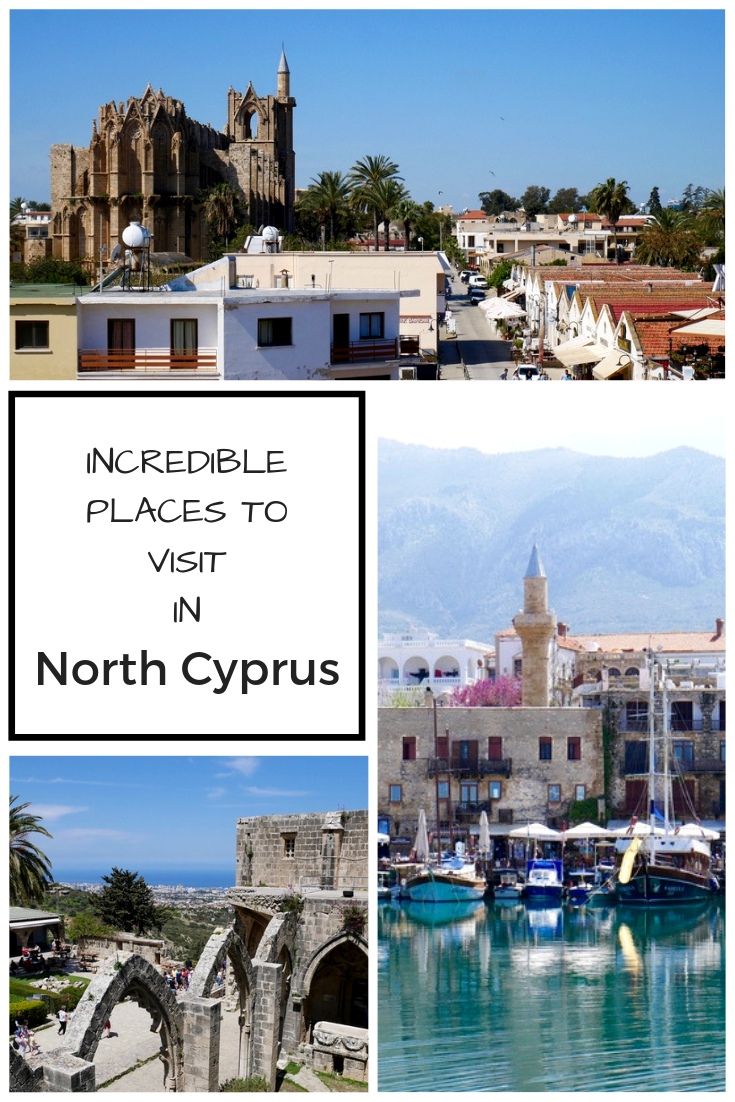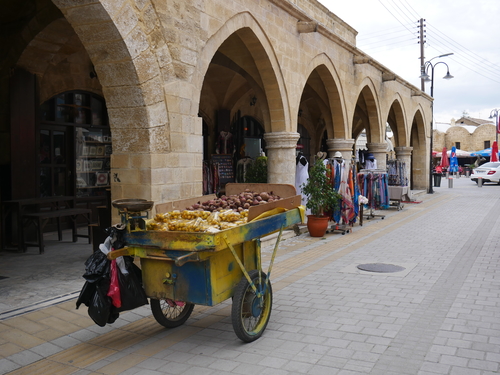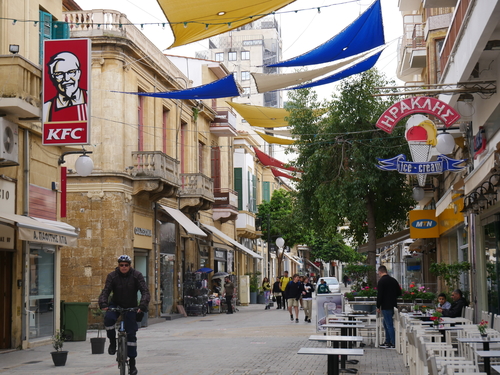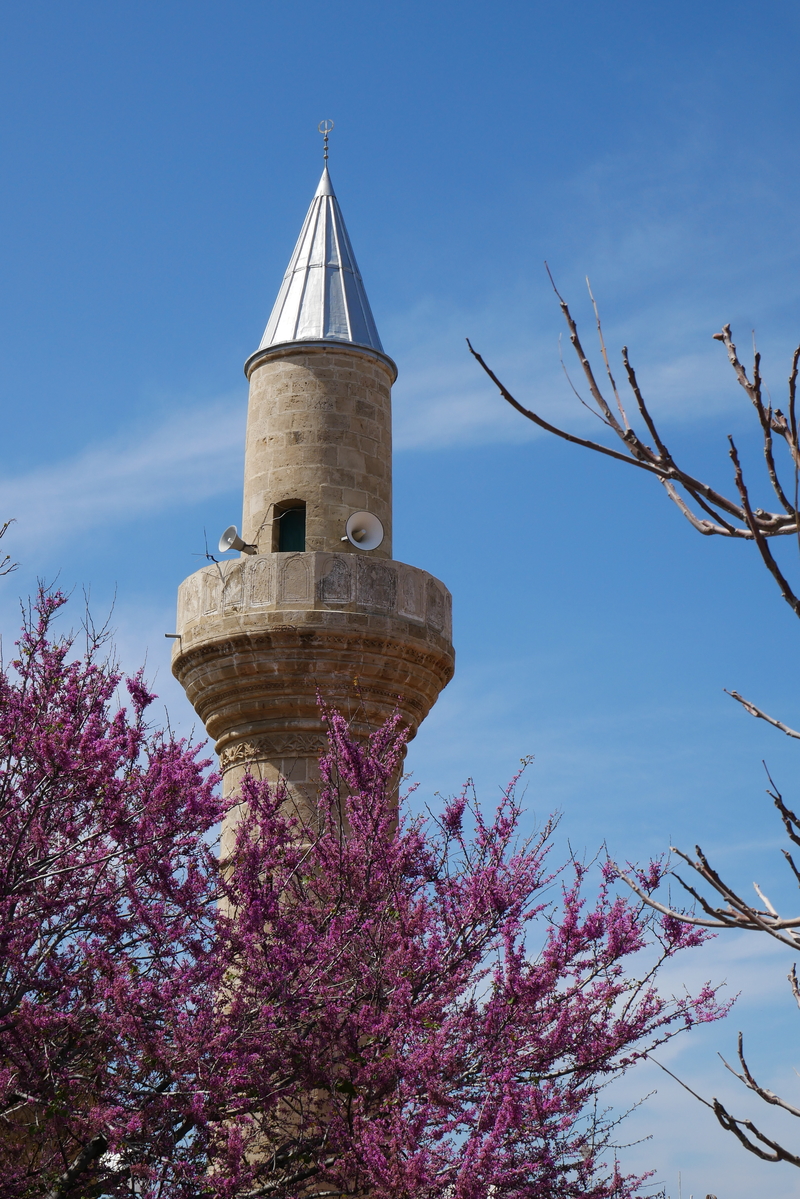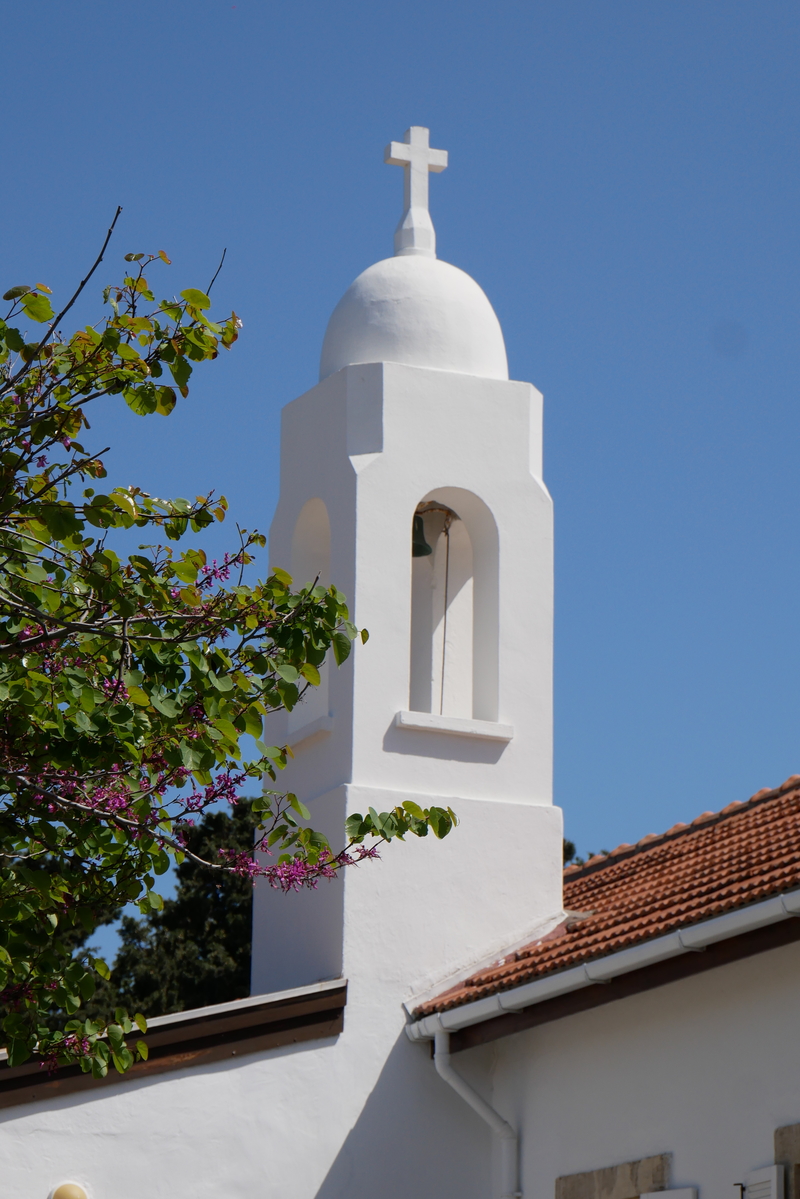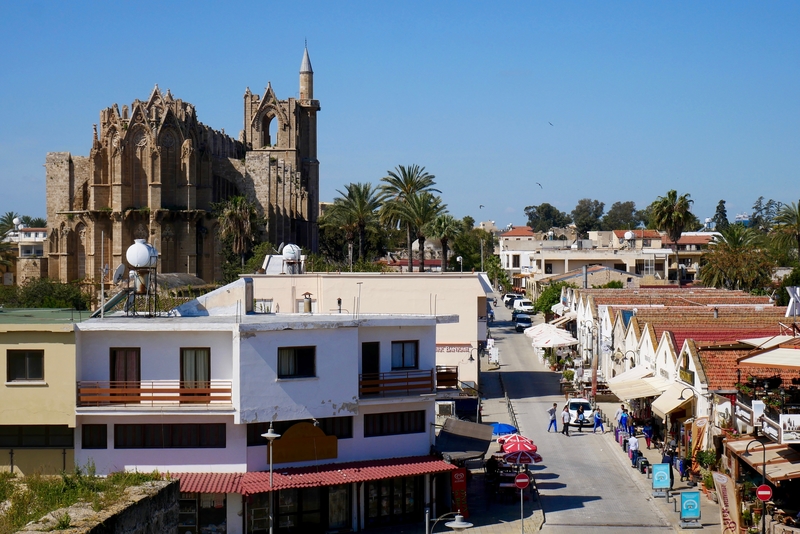
Intriguing Places to Visit in North Cyprus
Cyprus is a country divided.
Renowned for being the birthplace of Aphrodite and one of the Mediterranean’s crown jewels, the historically rich island has been effectively partitioned in two since the Turkish-led invasion of 1974. Cyprus’s position at the crossroads of the Eastern Mediterranean has led to repeated conquests by vying powers throughout history. Each vying power created legacies that survive to this day, adding to the country’s rich cultural milieu and complicating its reconciliation process.
To gain some understanding of Cyprus’ modern political and territorial situation, I traveled across the Green Line—a physical buffer zone that divides the island in half. My day trip to the Turkish-occupied northern part of the island gave me a deeper understanding of the country’s past, while showcasing some of the most beautiful places to visit in North Cyprus.
CYPRUS: A COUNTRY DIVIDED
The division of Cyprus dates back to 1974, when Turkey invaded the northern third of the country in response to a Greece-backed military coup d’état. In turn, the invasion resulted in the eviction of much of the north’s Greek Cypriot population, the flight of Turkish Cypriots from the south, and the partitioning of the island along the Green Line.
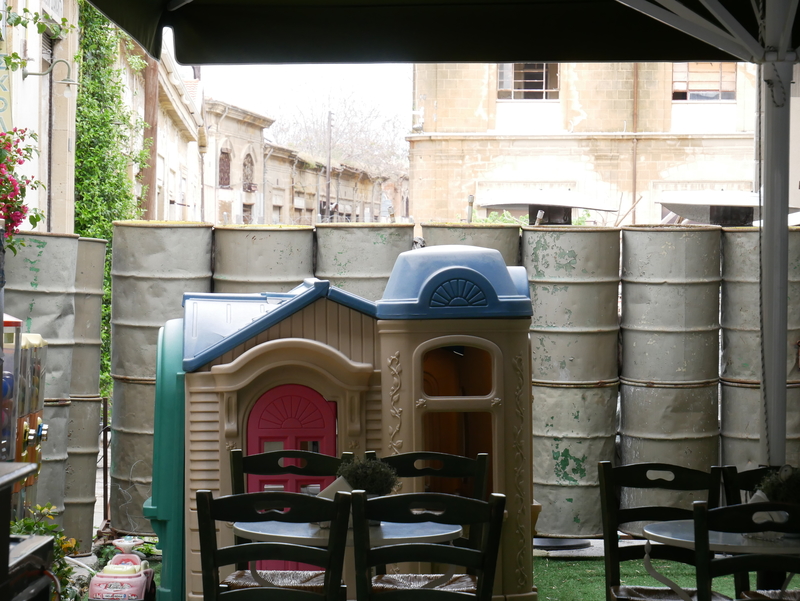
The Green line is a physical barrier that cuts across Cyprus and weaves its way through the island’s capital, Nicosia. The United Nations created the buffer zone as a temporary attempt to restore peace.
Today, reconciliation in Cyprus remains a question mark. The Turkish Cypriot government occupies the northern third of the island, while the southern portion is controlled by the internationally-recognized Greek Cypriots. United Nations peacekeepers continue to patrol the Green Line
And still, despite its quasi-independence from the rest of the island, Turkey remains the only country in the world to recognize North Cyprus.
TOP PLACES TO VISIT IN NORTH CYPRUS
While most tourists visit North Cyprus for its beach resorts and oceanview rentals, the narrow slither of land has so much more to offer—from monastic ruins, to vast archaeological treasures, to once-opulent cities.
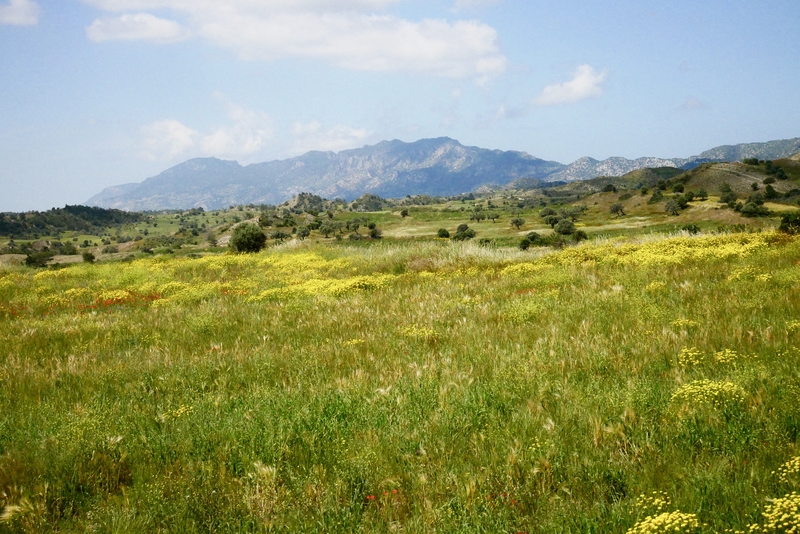
Straddling the Green Line, the complicated city of Nicosia signifies the collision of two worlds. At once, Nicosia represents East and West, division and harmony, war and reconciliation.
Further afield, the jasmine-scented old towns of Famagusta and Kyrenia resemble open-air museums that cram a fascinating history beneath their minaret-and-cathedral-speckled skylines.
Beyond the fascinating cities, the ruined Bellapais Monastery and ancient city of Salamis showcase the area’s vibrant and historically-rich past.
NICOSIA: A DIVIDED CAPITAL
Nicosia is the last divided city in Europe. Like pre-1991 Berlin or modern-day Jerusalem, Nicosia’s barrier acts as a physical schism between East and West.
I visited North Cyprus as part of an organized day trip from Larnaca. My day tour of North Cyprus did not include a visit to Nicosia, but I traveled to the divided city nonetheless, during a tour to the Troodos Mountians a few days later. Nicosia is one of the top places to visit in Cyprus because—despite simultaneously being a part of two separate worlds—its physical setting reveals the island’s cultural and political divide.
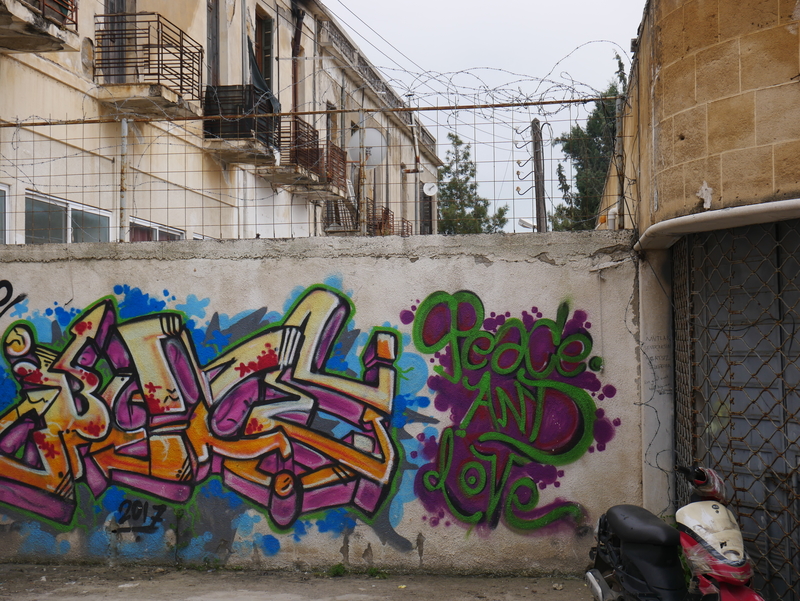
I only had an hour to explore the partitioned city during my visit to Nicosia. However, I made the most of my short self-guided tour. As soon as our tour bus pulled beside the gates of the old city, I set out as quickly as my legs would carry me—meandering past the pretty outdoor cafes in Greek Nicosia and winding through silent courtyards in the city’s Turkish counterpart.
Crossing the border into the northern side of Nicosia is like stepping into a different world. Kebab shops populate most of the storefronts, minarets overlook the skyline and Turkish flags sway in the breeze.
Most tourists limit their exposure to North Cyprus with a visit to Nicosia. Those willing to venture further afield, however, will be rewarded with intriguing snapshots of a country that doesn’t technically exist.
While in Larnaca, I decided to book a day tour to North Cyprus in order to see the island’s Turkish-influenced region. The tour included the once-lavish city of Famagusta and the charming harbor town of Kyrenia.
FAMAGUSTA
The walled city of Famagusta is a ghost town of sorts and one of the top places to visit in North Cyprus.
In the mid-1900s, Famagusta was a popular resort town that attracted visitors from around the world. In 1974, when the Turks invaded Famagusta, they leveled much of the city— hollowing out its imposing cathedrals and causing thousands of Greek Cypriots to flee to the southern end of the island.
Famagusta’s old city lies within fortified walls. From atop the Venetian walls, the shattered shards of its once-grand churches punctuate the skyline.
Within Famagusta’s walls, its quiet lanes are haunting and eerily shambolic. Clumps of faded frescoes cling to cathedral skeletons. Birds nest in the rafters of the hollowed-out steeples. Minarets stretch skyward from where bell towers once stood.
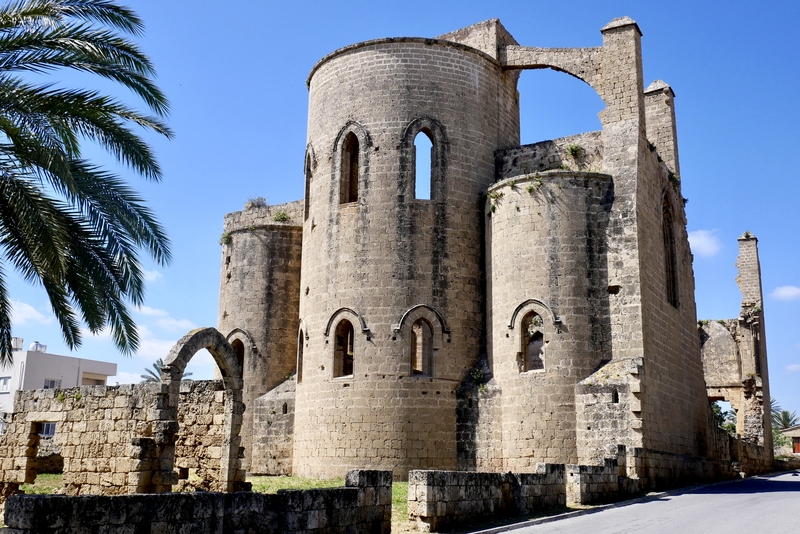
The most prominent building in Famagusta is the evocative cathedral-turned-mosque that towers over the surrounding cityscape. The former Cathedral of Agios Nikolaos is the finest example of Gothic architecture on the island. Built in the late 1300s and modeled after France’s Cathedral of Reims, the church’s derelict skeleton was converted into a mosque after the Ottoman Empire captured Famagusta in the 1500s.
Today, the Lala Mustafa Pasha Mosque is one of the most extraordinary spiritual relics on the island.

Outside of Famagusta’s historical core, the city’s abandoned Varosha district expands toward the sea. Prior to the 1970s, Varosha housed high-rise buildings and hotels that were popular with vacationers from around the world.
Varosha once boasted a population of nearly 40,000 and contained bars, restaurants and shopping districts. When the Turkish Army gained control of the area, it fenced off the city and forbade anyone from entering it.
To this day, Varosha is a ghost town. The area lies in disrepair, barricaded behind a barbed-wire fence. It is an exclusion zone that has been used as a bargaining chip for furthering the cause of the Turkish Cypriots.
BELLAPAIS MONASTERY
From Famagusta, our North Cyprus day trip continued onward, to the striking Bellapais Monastery that hangs above the town of Kyrenia.
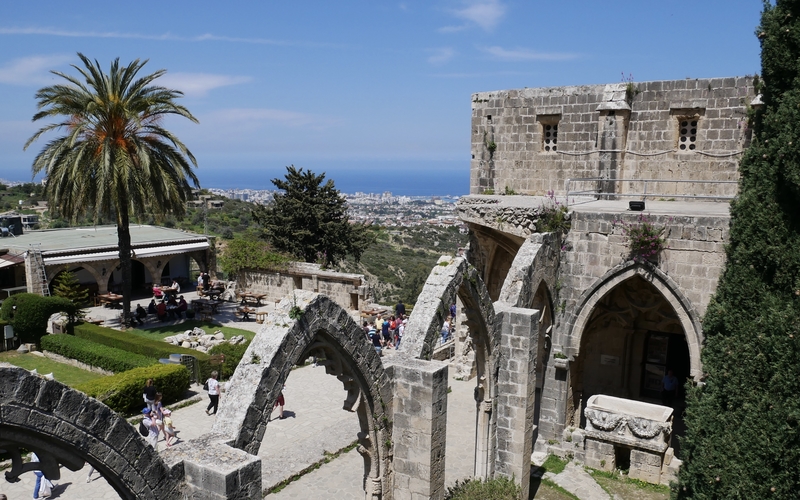
The Bellapais Monastery was built in the 12th century by monks fleeing Palestine after the fall of Jerusalem in 1187.
Today, the crumbling abbey remains in fine condition. The defining feature of the Bellapais Abbey is the structure’s arch-lined courtyard. From the courtyard, stairs lead to a rooftop that showcases panoramas of the cobalt Mediterranean Sea.
KYRENIA HARBOR
Kyrenia, also known as Girne, is often regarded as the top place to visit in North Cyprus. The picturesque harbor town looks toward the sea, backed by wildflower-speckled slopes and the silhouettes of craggy mountain peaks.
The undisputed gem of North Cyprus, Kyrenia contains a pretty harbor and an idyllic setting. The town’s touristy harborfront displays an attractive row of old carob warehouses that have been repurposed into restaurants and shops.
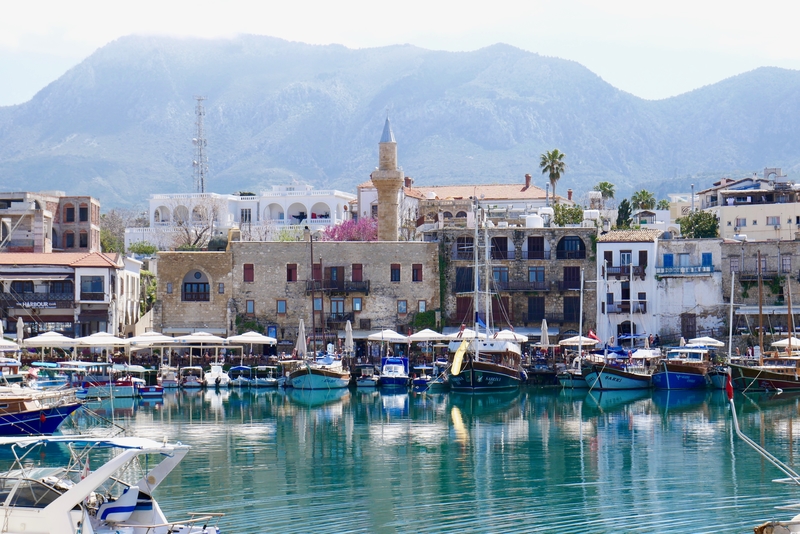
Kyrenia’s old town slopes upward, from the waterfront, toward the area’s new city. Dotted with churches and mosques and adorned with bougainvillea, the atmospheric winding alleyways hold a jumble of abandoned stone buildings that are slipping into disrepair.
The imposing Byzantine Kyrenia Castle is the main place to visit in Kyrenia. The castle stands guard over the city’s harbor and offers spectacular aerial views of the city from its honey-colored walls.
Entrance to the Kyrenia Castle costs approximately $2 and includes access to the city’s shipwreck museum.
Unfortunately, the castle was closed during my visit. As a result, I was unable to visit the castle’s museums, wander through its rooms, or catch a glimpse of the ocean views that can be seen from its ramparts.
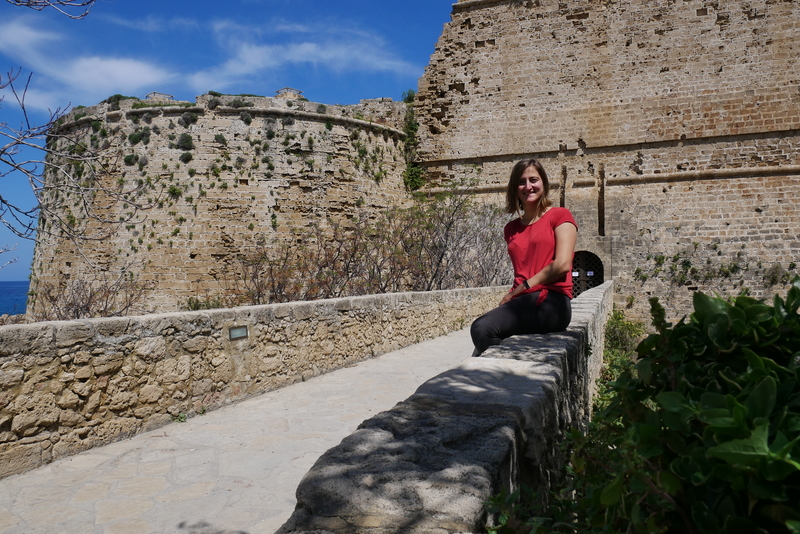
While Kyrenia’s old town boasts the city’s most treasured sites, the new town is chock-a-block full of casinos, liquor shops and tax-free shopping.
Turkish tourists flock to the area to indulge in activities that are taboo or illegal in their home country, while Greek Cypriots from the south frequent the area in order to buy discounted clothing and cigarettes.
As someone with little interest in partying or shopping, I only gave the new town a passing glance.
Instead, with limited amount of time to spend in Kyrenia, I focused on exploring the narrow winding streets and hidden architectural treasures that make this charming seaside village such an alluring destination to visit.
ADDITIONAL TOURIST ATTRACTIONS IN NORTH CYPRUS
Regrettably, my six day Cyprus itinerary did not allow for a comprehensive tour of North Cyprus. As a result, I wasn’t able to visit as many of North Cyprus’ attractions as I would have liked.
Had I had more time on the island, I would have chosen to travel to the Salamis ruins, or to the wild and remote Karpas Peninsula.
***
Traveling to North Cyprus offers a fascinating peek into life beyond the Green Line.
North Cyprus only receives a fraction of the visitors who descend on the island’s southern shores. And yet—as I would quickly learn during my whirlwind day trip to Kyrenia and Famagusta—making a trip across the Green Line is a key to understanding the island’s complexity.
My brief visit to the northern part of the island showcased some of the most intriguing places to visit in North Cyprus. It highlighted the area’s cultural and architectural diversity, revealing deep societal schisms and allowing me to peel back the island’s complicated layers of history and conquest.
___________________________
Like this post? Pin it!
